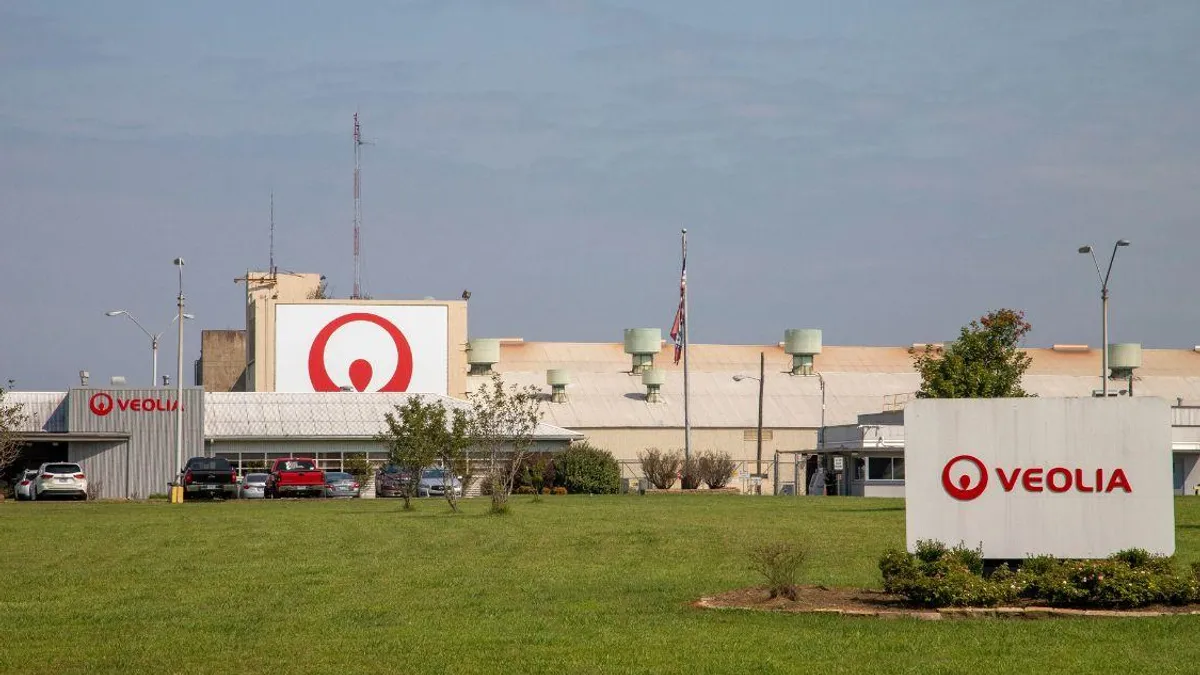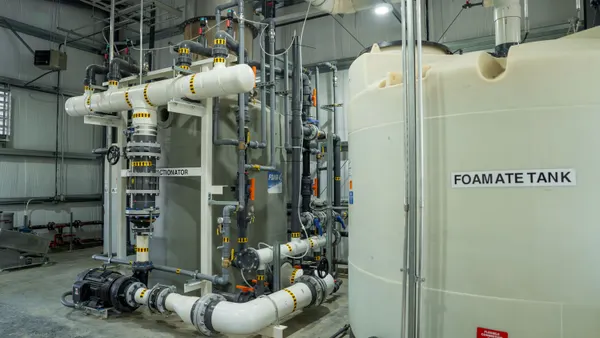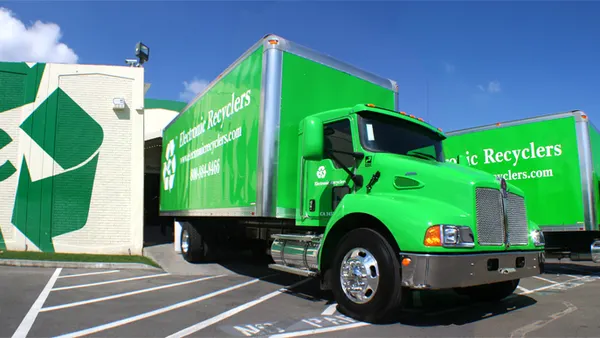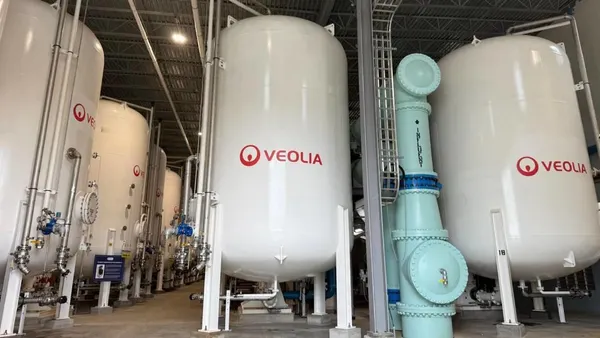Dive Brief:
- Veolia North America, a division of one of the world's largest environmental services companies, released its baseline scope 1 and 2 emissions in a sustainability report last week. VNA reported 1,046 kilotons of scope 1 emissions and 507 kilotons of scope 2 emissions in 2023. Those numbers will serve as a baseline for future years.
- Globally, the company is targeting a 50% reduction in greenhouse gas emissions by 2032 and net zero emissions by 2050. This is the first time it has broken out and reported North American emissions.
- The company's latest sustainability report also revealed that VNA helped its clients avoid 430,000 tons of greenhouse gas emissions through its services. Those include municipal water treatment, hazardous waste disposal and other water, waste and energy services.
Dive Insight:
VNA is positioning itself as a sustainability leader for its clients as it targets growth in the U.S. market. Its U.S. revenue grew from $2 billion to $5.4 billion from 2019 through 2023, the company reported, and it's looking to further double its footprint by 2030.
To do so, VNA is targeting water services and hazardous waste. Its three-year plan to grow its presence, dubbed GreenUp, includes goals to treat 400 billion gallons of fresh water, "depollute" 10 metric tons of hazardous waste and eliminate 18 metric tons of carbon dioxide in 2027.
The company is also performing extensive modifications to its hazardous waste incineration site in Gum Springs, Arkansas. The project, which reportedly cost $350 million, includes a massive new rotary kiln and waste heat capture for energy on site. VNA is also installing a 5 megawatt solar field on site. It expects the facility to start up in late 2024, per the sustainability report.
Veolia Group previously had its greenhouse gas emissions reduction targets verified by the Science Based Targets initiative in July. Veolia Group is also incorporating scope 3 emissions into its 2050 decarbonization goal, but is still in the process of quantifying that metric across its business.
The company pitched itself as a leader in cleanup of per- and polyfluoroalkyl substances at an investor event in April, promising to expand its capacity to treat water for the class of chemicals. Days earlier, the U.S. EPA had set maximum contaminiation limits for PFOA and PFOS in drinking water. The agency would further designate the two chemicals as hazardous substances a day after the event, creating a new marketing opportunity for companies that could effectively manage or destroy the substances.
VNA said in its report that it has deployed PFAS treatment technology at more than 30 sites across the country, including at 17 drinking water wells in New York state. Those facilities have used over 1 million pounds of granular activated carbon and other treatment materials to date, according to the report.
Looking forward, the company sees opportunity to expand that work, and has plans to install PFAS treatment technology in at least four states. Its efforts come amid the federal government’s implementation of a PFAS Strategic Roadmap, which has been guiding policy decisions on the chemicals since 2021.











